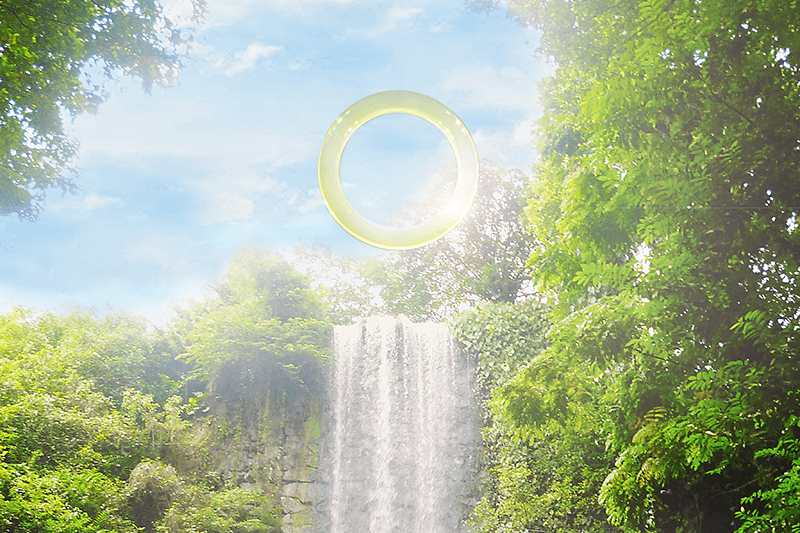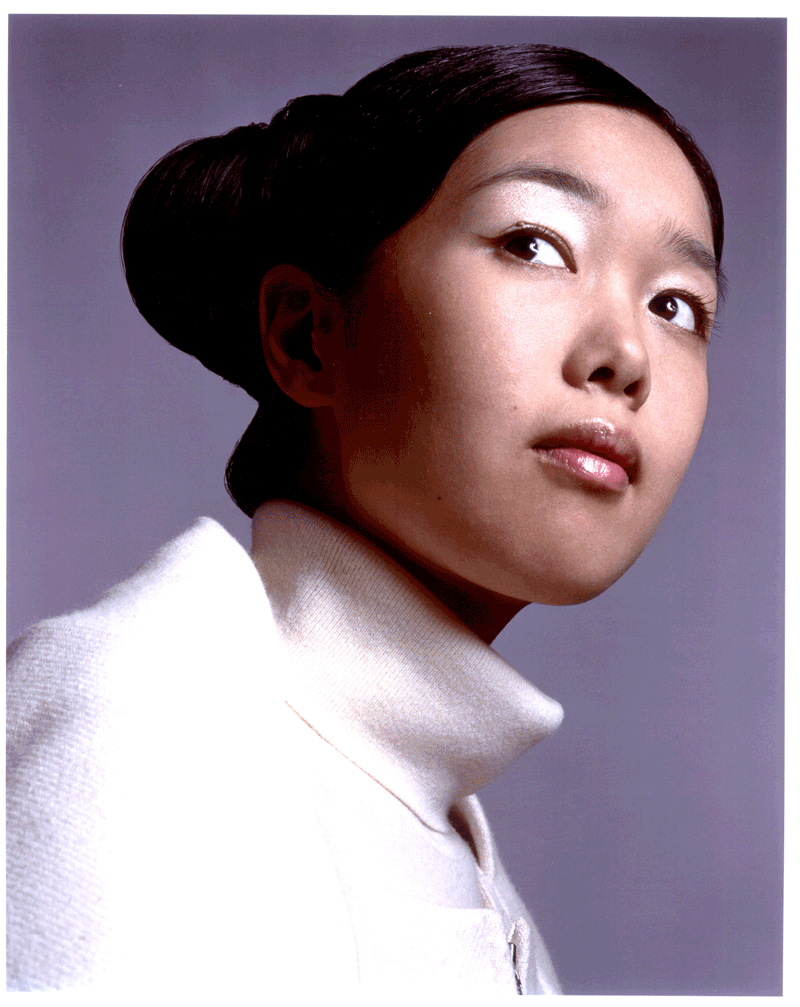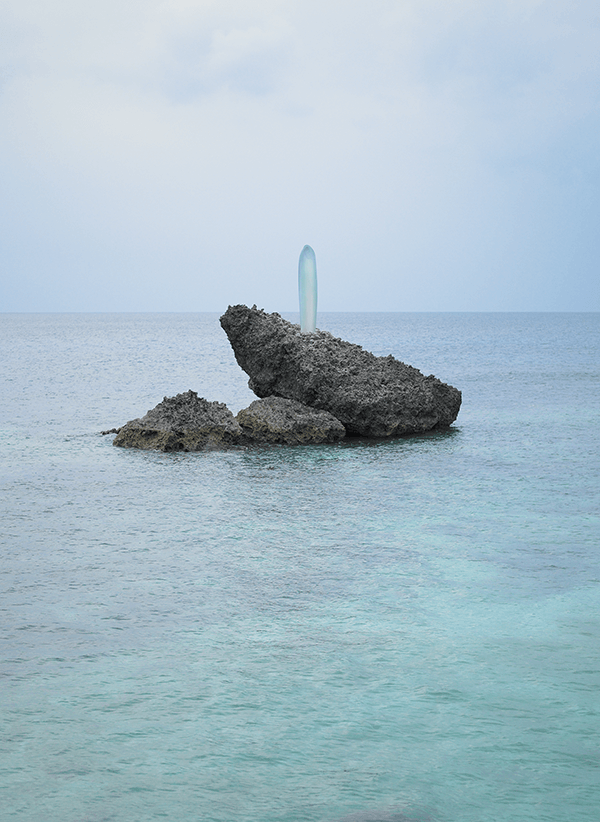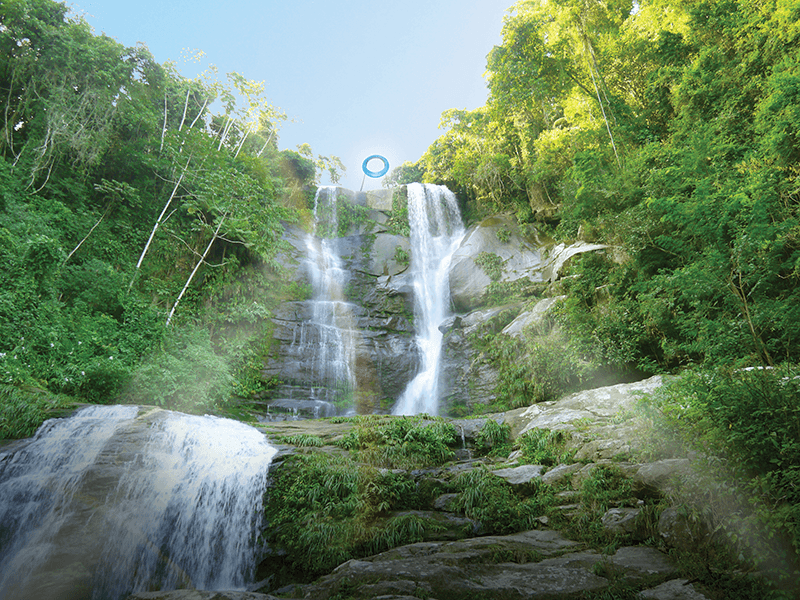Following a solo show at SCAI the Bathhouse here in Tokyo, artist Mariko Mori has just unveiled her latest work, a monumental installation that features a massive ring suspended in front of a Brazilian waterfall. The first thing we wanted to know was what the source of her inspiration was …
“I dreamt of a ring at the top of a waterfall. I didn’t know where it was, but I knew it was a tropical setting, because of the moisture of the air and the denseness of the plant life.” From this initial vision came the dramatic installation, “Ring, One With Nature,” which was officially unveiled this month. The work is a huge translucent ring hung from cantilevered poles above a waterfall in a national park in the city of Rio de Janeiro. A part of the celebration for the 2016 Rio Olympics, the ring will stay in its place as a permanent installation after the Games have finished.
While her original inspiration may have been effortless, bringing her dream to reality has been a long way in the coming. In 2009, when Mori first had the dream, she had only been to Brazil one time before, on a trip to the Amazon. “But the vision stayed in my mind and grew over a couple of years,” she says. “Then, when I came to Brazil in 2011 for a traveling exhibition, I was taken to a waterfall near Brasilia, and it made me think that there must have been some kind of a connection to Brazil in my dream. So I started to visit many different waterfalls in Brazil to find a place that resembled what I saw in my dream … The waterfall was vertical, and almost perfectly straight, so I was looking for something like that.”
She found the spot in Véu da Noiva, a national park within the city limits of Rio de Janeiro. For Mori, an artist who has gone through many phases in her work – from photographs that depict her as a stylish, “sci-fi pinup” to abstract sculptures and installations inspired by cosmology and arcane mathematical concepts – “Ring” is not just the realization of an individual dream, but the chance to achieve one of her larger goals: placing “six site-specific art installations in six unique ecological settings on six continents.” Mori has established a non-profit organization – the Faou Foundation – to help bring this artistic idea to life. The first work in this series was “Sun Pillar,” a translucent sculpture mounted on a rock in the sea off of Miyako Island in Okinawa; the piece catches the changing light of the sun during the day, and from different angles throughout the year.
Large-scale environmental projects like these simply can’t be done without the approval of local and regional governments, and Mori’s most recent piece is no different. Once she had decided on the location and members of her foundation began filing the necessary paperwork, Mori reached out to the Olympic Organizing Committee to let them know about her project, and they were enthusiastic about including “Ring” in the Rio Olympics cultural program. Does she think that Games organizers were particularly drawn to the iconic shape of Mori’s latest installation? “Well, I hope so [laughs]. It’s really a new ring that I’m presenting; it’s in addition to the Olympics’ iconic rings. One way that I look at the five rings of the Olympics are as a representation of the world’s different ethnicities and continents, so I wanted to present the additional ring to symbolize the connection between nature and humanity, as a ring to honor nature.”
When asked whether the piece was a modern take on the Shinto tradition of decorating places of natural beauty with a length of sacred rope called the nawa, Mori agreed, but said that she thought the origins of the project were broader and went even farther back. “The shape makes me think about Zen’s enso, as a symbol of eternity, oneness, and completeness. Of course, that shape’s not only important in Eastern philosophy, but it’s something you can see in Western iconography, such as in the halos you can see in Christian art, and of course that idea of divine light. I think that idea even goes back to prehistory, where a circle would have its own unique meaning.”
Along with the official debut of “Ring” in August, Mori is looking forward to playing a small role in the Rio 2016 opening ceremonies, as a member of the torch relay. She is also well aware of the cultural connection between the venues of this year’s Olympics and the Games to come. “It feels like a great privilege, knowing that the next Olympics will be held in Tokyo. And given that Brazil has the largest population of Japanese people outside of Japan, it’s also a great honor and I’m happy to be able to leave behind such a legacy project that will remain after the Olympics.”
Finally, given her passion for works that take plenty of time from concept to completion, we wanted to know about her involvement in the 2020 Olympics, but Mori said that she had to leave us in suspense: “I have to do one thing at a time!”
Main Image: Photo by David Sims












